
If the device of the well you are faced with a quicksand, you will be offered a bottom filter and shield, holding back the water-saturated soil. However, to make the filter is advised, and if the well is not on the quicksand-for crystal clear water.
Do I really need a bottom filter, aspen shield and other devices?
About clean water
And to start with a question for which people go to all sorts of tricks. Whether the water in your well is clean or not.
You should distinguish between “clean” and “potable”. In appearance, the water in the well can be transparent and clean, but will not necessarily be drinking, that is, appropriate sanitary standards. To determine this, a chemical analysis is needed.

The well is fed by groundwater. External water (precipitation or water filling the water bodies) becomes ground water, passing through the thickness of the earth. This clears it from most types of pollution, including biological.
But at the same time there is a saturation of mineral elements, because water is a universal solvent. With the chemical composition of groundwater you can not do anything, because it depends on the structure of the soil through which the water passes. But to exclude hit in a well of the moisture which has not passed natural filtration, — in your forces.
Will the bottom filter help in water purification
No. And you yourself will make the same conclusion, if you judge sensibly. Bottom filter-is filling the bottom of the well of sand, preferably quartz, and gravel or pebbles. And it’s really capable of purifying water. But if you need a filter in the well, let’s understand.
How do I clean my water
Today, there are many methods of water purification: physico-chemical, biological, ion exchange, electrical, osmotic. But within the framework of the considered question (the device of the bottom filter) only one method of filtration is interesting — mechanical. The mechanical method of cleaning, despite its simplicity, is very effective. And in many cases, such purification of water from impurities is quite enough or at least enough to remove most of the pollution.
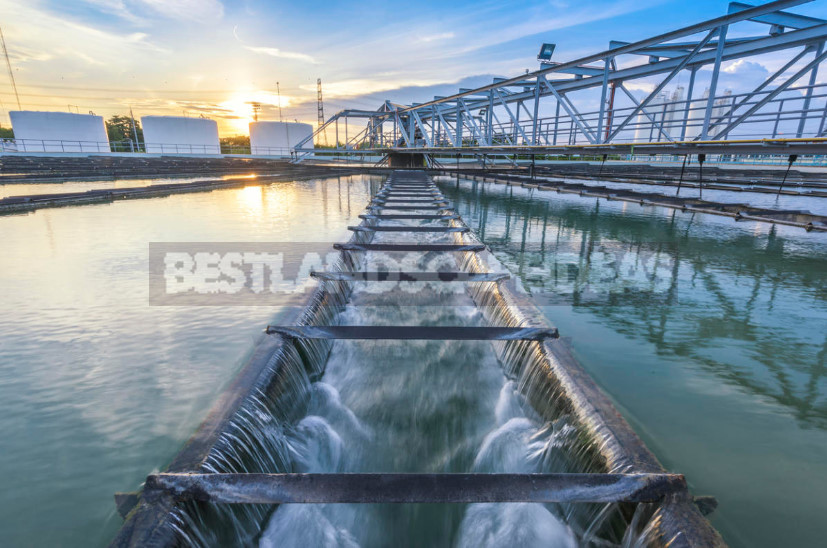
This filter works on the principle of a sieve or sieve, holding the dirt that is in the water. Separate pollution at the molecular level, that is, what is dissolved in water, mechanically fail.
Part of this problem, as well as the elimination of bacterial contamination in the form of living organic matter, solves the combination of mechanical and biological treatment. This concept is embodied in the so-called English (or slow) filters.
They are sand and gravel backfill, in which sand and gravel of different fractions are laid in a certain sequence. The thickness of such filling — about 2 M. the Purified water is the top layer of about 1.5 m and gravity slowly (0.1 to 0.2 m/h) leaks through the filter.
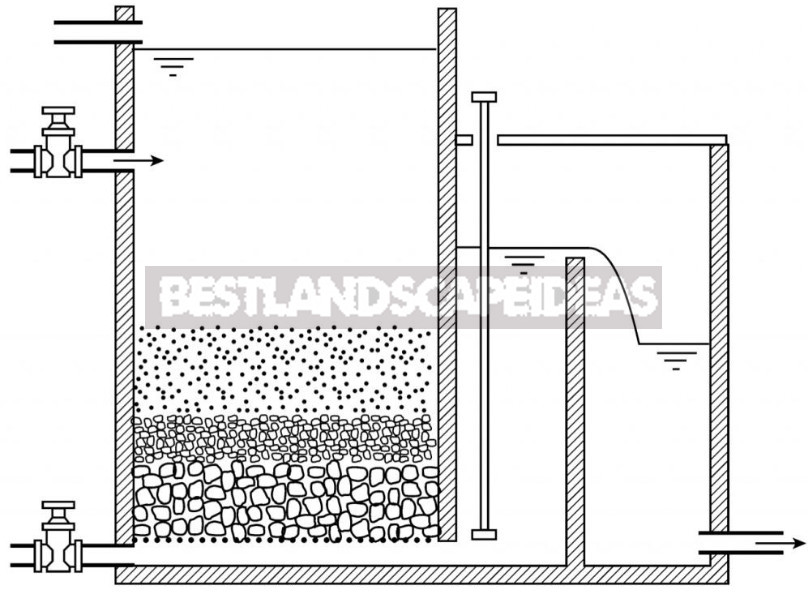
In the upper layer of sand after a while formed a film of bacteria and algae. This biological film is used for water purification: the total population of the living part of the filter eats dissolved nitrogen and other chemical compounds. Large debris is retained by the bottom of the filter-a layer of quartz sand.
The filter is considered to be “Mature”, that is, able to purify water to the drinking standard, only after the formation of this biofilm of a certain thickness. The thicker the film (the larger the colony of bacteria and algae), the better the cleaning.
But with a significant increase in the thickness of the biofilm, the filtration rate decreases. Therefore, periodically it is necessary to restart the filter, destroying the biolayer and forcing microorganisms to arrange a new colony. This is exactly how water purification occurs in nature: microorganisms live on the surface and in the upper layer of the soil, and below that water seeps into the soil consisting of sand and gravel.
Device of the bottom filter
The well (if properly arranged) is filled through the bottom. That is, it gets water infiltrated from the earth’s surface to the level of the first water horizon, passed at least 2 m backfill natural slow filter. Those who advise necessarily to make the filter, usually offer such a scheme of its device.
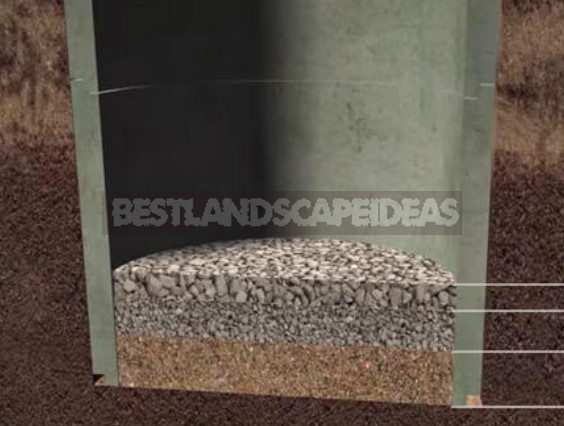
Question: how can the additional 600 mm of sand and gravel backfill at the bottom of the well help in water purification, if the water has already passed biofilm on the soil surface and 2000 mm of sand and gravel before entering the well?
Suppose that the well is arranged not quite correctly, and the water enters it not only through the bottom, but seeps through the walls. You assume that the water in your well is not only underground, that is, passed natural purification, but also upper. Will the filter help to clean it? Again, no.
Firstly, because the layer of sand and gravel of insufficient thickness, and secondly, the water in the slow filter moves under the influence of gravity-down. To move up, purged in the filling, you need pressure, and it in the well there. And finally, the main component of the biomechanical filter — the biological film of algae and bacteria-does not work there.
In addition to the slow, there are also fast filters. They work only on the mechanical principle of cleaning. The thickness of the sand in them is much less, and the filtration rate is higher – up to 12 m / h.
Maybe the bottom filter works on the principle of a quick sand filter? Again, no. Because the high filtration rate is provided by the pressure, which can not be in the well. A small layer of sand can only hold large particles, so fast filters, unlike self-contained slow, used only as one part of the water treatment system. Until soon the filter water is subjected to settling or coagulation, and after it it is further disinfected.
Than fill up the bottom of the filter in the well
Perhaps it’s not how to fill the filter, and what. In addition to the usual gravel or river pebbles for the device filter layer at the bottom of the well is recommended to use the following materials:
- jadeite
Supposedly this mineral is able to miraculously have an antibacterial effect. Jadeite is a silicate of aluminium and sodium, similar to jade. And, like jade, used to make jewelry.

Cheaper varieties of jadeites are used as stones for sauna stoves because of the high heat capacity and inertness to water even when heated to high temperatures. None of the antibacterial properties of jadeite in Mineralogy is unknown.
- zeolite
This mineral really has good adsorption properties and is used in filters, including water. It is also used for the manufacture of mineral food additives.
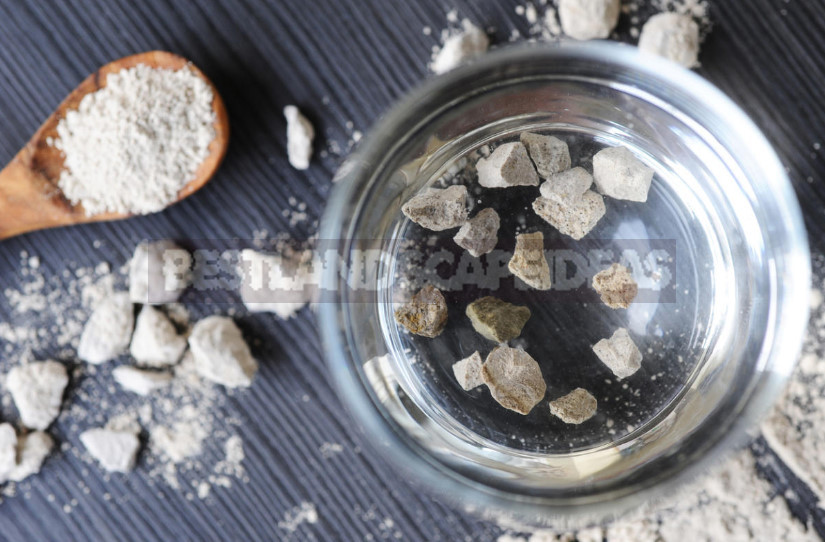
- shungite
One of the varieties of carbon, occupies an intermediate position between anthracite and graphite. Really used as backfilling of fast filters and for fixing colony of microorganisms in slow ones. Sorption properties of shungite are no different from other coal deposits.
Why is this filter practically useless and even harmful
Because the practical benefit of the fact that you fall asleep in the well a few wheelbarrows pebbles, no. Water in the well or there is no need for additional cleaning, or, if necessary, this method is ineffective.
But the harm this filling, as it:
- reduces the volume occupied by water;
- can reduce the flow of water;
- quickly silted;
- complicates (and increases) works on cleaning of a well.
Any filter is quickly clogged and need either replacement or cleaning. For example, fast filters at water treatment plants require cleaning up to 2 times a day. Household filter cartridges manufacturers recommend to change at least 1 time per month. Clogged cleaning device not only does not perform its function, but can further contaminate the water. Are you ready to serve your bottom filter once a month? If not, then why do it?
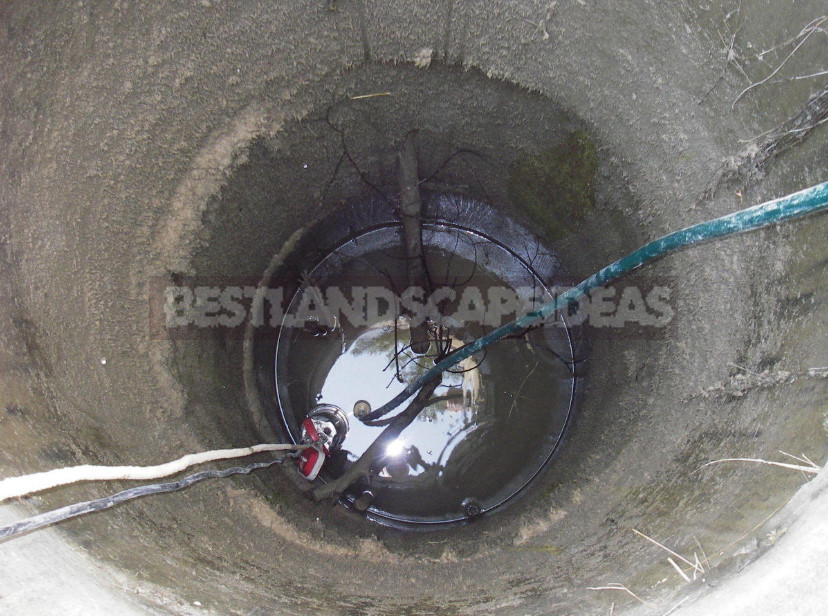
In the village wells, indeed, at the bottom of the stacked stones. But not for filtering, and in order not to agitate the sand at the bottom, scooping up a bucket of water. Used pebbles and a few large stones, they are easier to get to wash during clean up the well.
Aspen shield
There is another kind of bottom filter — shield with holes. Made of wood or stainless steel. This design is recommended for wells on the quicksand to restrain the flow of sand brought by water.
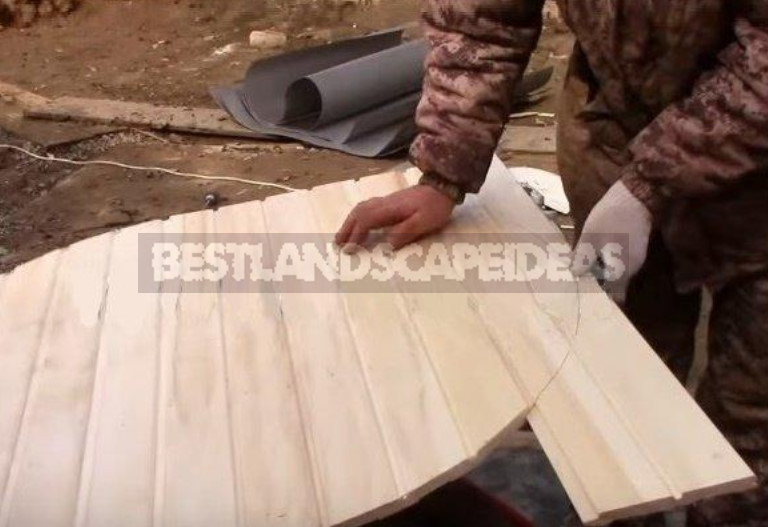
It is placed on the bottom, loading stones. In variations, the construction of wood is complemented by geotextile, top arranged gravel filter, the entire structure is placed in a stainless steel flask.
But from the invasion of quicksand they will not save. Amount of sand to be washed for a while will decrease but completely from him you won’t. The well will still have to be cleaned regularly. And at the same time also to pull out the aspen Board tightened in sand and pebble.
And one more thing: wood, of course, is very resistant to water. But that doesn’t mean nothing’s happening to her. In the photo below you can see that the aspen shield, which lay in the water for no more than 6 months, is covered with a black plaque — the products of microorganisms.
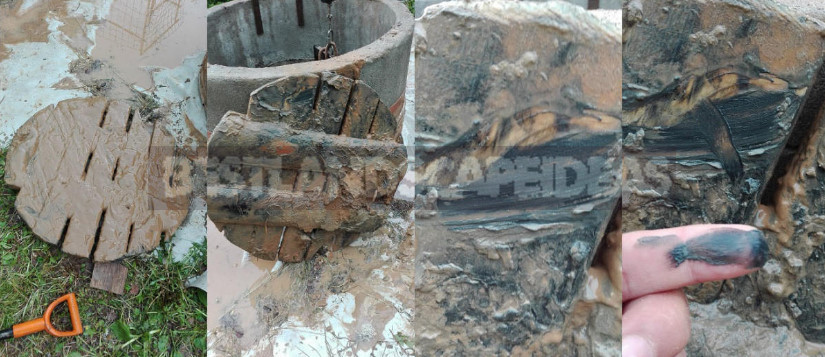
To do or not to do the filter-everyone chooses himself. But the question of water purity and its suitability for drinking should be solved by proper water treatment (filtration) after extraction from the well. Cleaning the extracted water is more efficient and easier than trying to do it in the well with the help of the bottom filter. Not stopping to find out, through the lab, what you need to clean your water, and not rely on “anti-bacterial” properties of the backfill.
Also important is the correct structure of the well, the design of which does not allow the ingress of untreated surface water. In particular, this is achieved with the help of a clay castle.
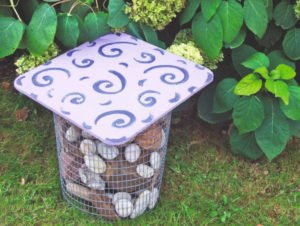



Leave a Reply